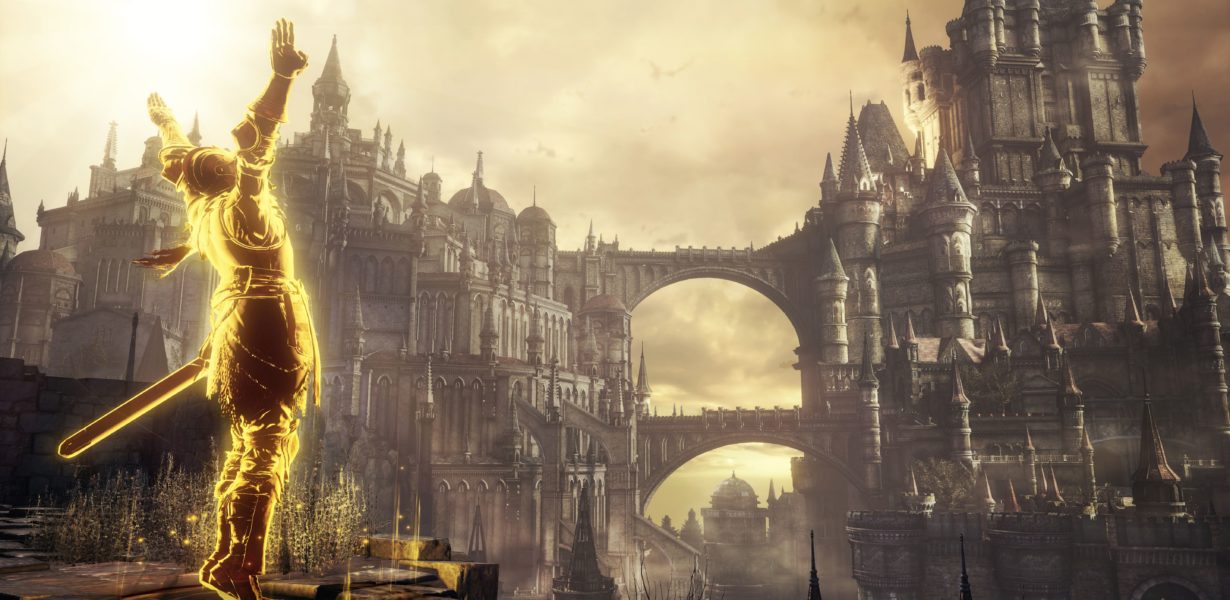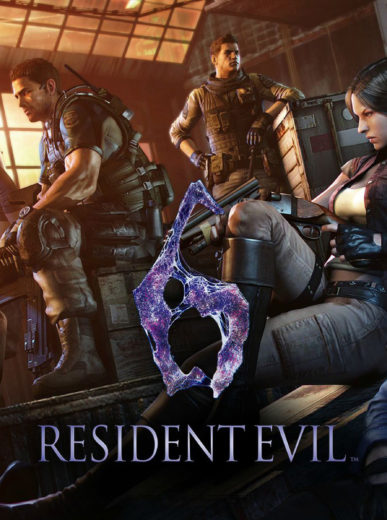If we had to pick one game or series in the vast library of video games we’ve amassed over the years and label it as ‘art,’ let it be Dark Souls and its worthy sequels. While the original Dark Souls was well-known and widely advertised as “the masochist’s game in which you keep dying over and over again,” audiences have quickly learned that the appropriate word to describe these games with isn’t “hard,” but rather “challenging.”
What made the Souls games so special was the community-created philosophy that you couldn’t truly fail in this game as long as you kept trying and learning from your mistakes – the true failure only occurred when you gave up for good. And once you got past the steep learning curve and started looking at the game’s finer points and world-building lore, players also began to see that there was a very intricate story being told here.
Dark Souls III takes that same unforgiving gameplay formula and refines it even further, at the same time wrapping up its subtly epic saga with a concluding chapter that serves as a fitting finish to this fiery tale of dragons and mankind.
In Dark Souls III, you play as an unkindled one. The fire is fading, and the Lords of Cinder need to be brought back to their thrones to link the fire once more so that the world can continue to survive. It’s your job as an ashen one to guide the Lords back to their thrones so that the cycle can be renewed. Unlike the Chosen Undead from the first game, you are not fit to link the fire yourself, but you are worthy enough to fight the Lords.
Right off the bat, everything about Dark Souls III feels instantly familiar to anyone who’s played the previous games. Just like in Demon’s Souls and Dark Souls II, Dark Souls III reintroduces the concept of dwelling in a main hub where you can interact with NPCs you encounter all over the world and level up via the services of a seemingly innocuous maiden. It’s a fitting gameplay decision; the world is near its end, and you’re gathering people and other champions of ash to your home base so that you may learn new skills from them to power yourself up, and to revel in the sense of camaraderie that comes with trying to shepherd the Lords of Cinder back to their thrones.
In a world that feels as desolate and bleak as the one so intricately crafted in Dark Souls III, it feels comforting to come back to this hub and be enveloped in its soothing area music and friendly faces all around you. It’s even more fitting Dark Souls III should reuse Firelink Shrine as your hub area – this is where the first Chosen Undead set off to the link the first flame, so it’s only appropriate for players to return to the series’ roots as they try to rekindle the first flame once more.

From the bonfire at Firelink Shrine, players can warp to other areas. This means that Firelink Shrine itself is disconnected from the rest of the world. Thankfully, this is where the disconnect ends. While the world of Dark Souls III isn’t interconnected like Lordran (no crazy Catacombs or Blighttown sequence breaks in this one), there are still certain bosses and areas you can tackle in different orders.
World progression is largely linear with a few branching paths here and there, and it’s entirely possible for you to move too far in one direction before later realizing that you’ve skipped some mandatory bosses along the way. It’s nice to be able to fight a few bosses out of order, but you’ll rarely find yourself looping back to an early-game area, which was arguably one of the major factors that made the first game so special.
Even so, the art design and direction in Dark Souls III is so gorgeous it’s difficult to fault the game for not giving us more interconnected areas. After getting past the duller-looking, yellow hues of Lothric, which we’ve seen in countless streams and videos by this point, the game’s color palette becomes a lot more varied after that. You’ll be diving headfirst into grimy swamps, climbing tall ladders to bask in the glorious sunlight atop a ruined bridge, and traverse along white icy peaks, as well. Dark Souls III runs on the same engine as last year’s PS4 exclusive Bloodborne, and some areas do look very heavily inspired by the dark Victorian environments of that game, but the game retains its medieval fantasy identity with a lot more detail and craft injected into it.
A nod must also be given to the level design here. While Dark Souls II’s level design was a little questionable to say the least, I’m pleased to report that the design in Dark Souls III is on point. There is a lot of verticality, and many times you’ll look over a tall structure and get a glimpse of an as yet unexplored area that you’ll make your way to hours after.
As with all Soulsborne games, you’ll die very frequently in this one, but it won’t be because of gank mobs (well, in most cases) and large numbers of enemies. The enemy placement in Dark Souls III is set to catch you off-guard and punish complacent players. You’d be wise to keep your shield up when you enter a new area; overconfidence will be your greatest enemy, just as it’s been over the course of the past four Soulsborne games. Overall, Dark Souls III feels like a new brand of difficulty because of how it mixes in the combat speed of Bloodborne. Enemies are so fast and aggressive, but so are you. Every movement you make feels weighty and substantial, and the gameplay is tight enough so that you always feel in control of your character’s actions.
As far as the game’s bosses go, they’re all unique and all of the fights – save for one – are memorable. Bloodborne perfected the concept of bosses having different phases and changing up their patterns as you depleted their health, and Dark Souls III takes this idea to a whole other level. The game often tricks you with a deceptively easy phase and just when you’re about to put your controller down in relief, Dark Souls III throws a curveball as the boss returns with more attacks to make your life hell.

If there are any complaints to be made about the game, it’s that the PS4 version constantly dips below 30 frames per second and suffers from stuttering issues in certain areas. While the game is very visually pleasing, it can be a nuisance to see textures and objects constantly pop in when my character is sprinting.
The boss fights remain the highlight of Dark Souls III, especially since these segments are where the game’s soundtrack roars to life. In this game, I found myself looking forward to boss fights not for the challenge it would provide me, but for the tremendous mix of the orchestra and choir that rains down as you get your ass beaten by From Software’s latest monstrosities. The series’ music and soundtrack has come a long way since Dark Souls, and it’s heartening to see its evolution culminate in a glorious soundtrack where not a single piece feels wasted.
Finally, and perhaps most importantly, Dark Souls III rounds out its story neatly. Depending on which ending you get, you’ll also form new opinions on how the series can be shaped from here. Dark Souls III answers many questions that have been raised since the first game and also leaves a few new things open to fan speculation. The game’s final moments feel like an elegantly written love letter to the lore fiends who have been combing through the series’ item descriptions for years. I can’t definitively answer the question of whether this game serves as a solid conclusion to the series because of its multiple endings, but it sure as hell feels like the end of an era.
As the final game in the series, Dark Souls III delivers a fantastic, no holds barred, 30-hour experience that will satisfy longtime fans. Dark Souls III polishes its gameplay mechanics to a shine, and delivers the lore in droves to those who hunger for it – the perfect mix for an action RPG. Praise the Sun.


There are no comments.